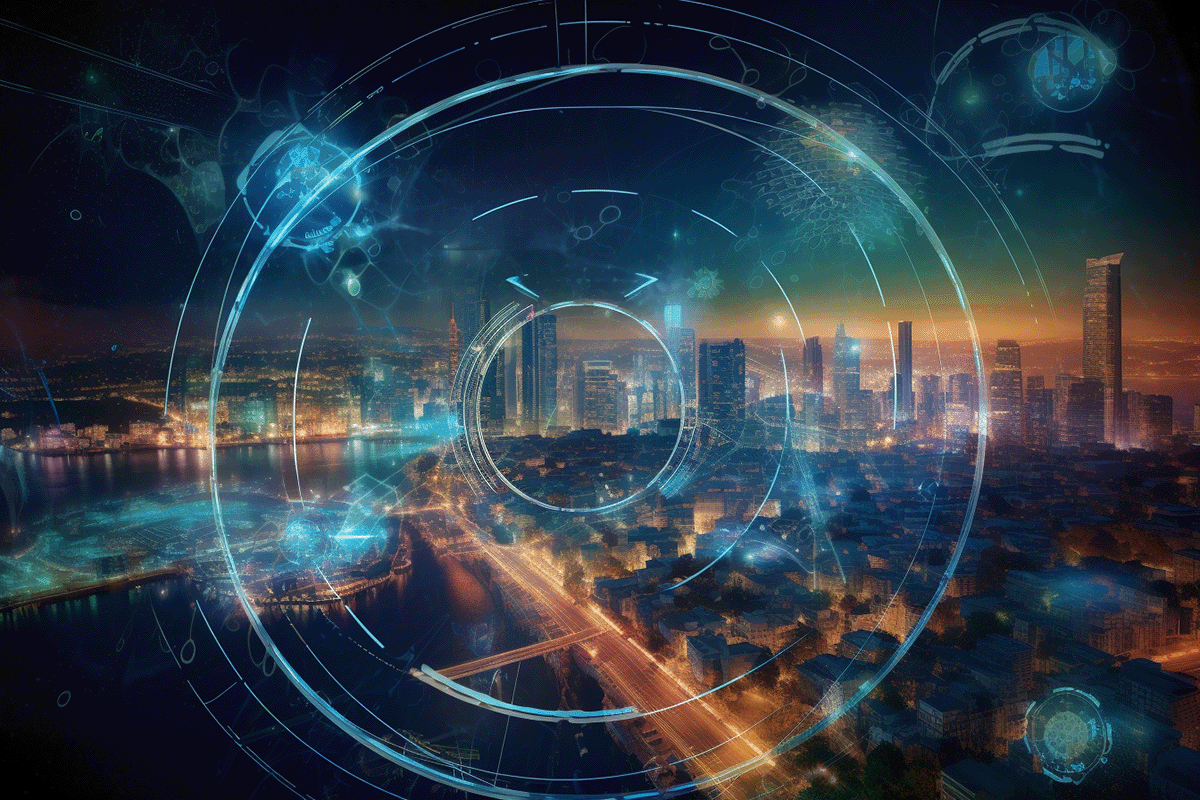Exploring the Probabilistic Nature of Generative AI and Its Impact on Productivity and Society
- 7 minutes read - 1282 words
Table of Contents
Generative AI has captured the public’s imagination with its seemingly magical ability to create content and automate tasks.
However, the probabilistic nature of AI, based on entropy, has led to varying reactions and the formation of distinct groups with different attitudes toward AI.
As AI continues to advance and impact various aspects of our lives, it is essential to understand its nature and how it can boost productivity while addressing potential challenges.
This text is based on Interview with an AI about philosophy (GPT-4) .
The Probabilistic Nature of Generative AI
Unlike traditional tools where creators exert direct control, generative AI operates probabilistically, relying on entropy and complex algorithms to generate outputs.
This unique characteristic can make AI systems like Midjourney or ChatGPT appear magical, leading some to perceive them as possessing superpowers or free will.
This article is based on a long interview with GPT-4 .
Probabilistic Nature of generative AI and limits
Understanding the probabilistic nature of generative AI is crucial in harnessing its potential. Generative AI models, such as GPT-4, generate outputs based on probability distributions learned from vast amounts of data.
These models can sometimes produce unexpected or undesirable results due to biases in training data or the inherent uncertainty of the generation process. Therefore, it is essential to address the challenges associated with generative AI, such as:
- Bias and fairness: Ensuring that AI-generated content is unbiased, fair, and representative of diverse perspectives is crucial. This can be achieved by using more diverse training data, developing techniques to mitigate bias during the AI training, and fostering transparency and accountability in AI development.
- Security and privacy: Safeguarding user data and protecting AI systems from adversarial attacks is essential. Implementing robust security measures, such as secure data storage, encryption, and privacy-preserving machine learning techniques, can help maintain user trust and protect sensitive information.
- Explainability and interpretability: Developing AI systems that explain their reasoning and decision-making processes can facilitate greater understanding and trust between humans and AI. This can be achieved by designing more interpretable models, incorporating explainability as a core component of AI development, and fostering collaboration between AI researchers, domain experts, and end-users.
- Learning to understand AI: Because AI systems have a probabilistic nature and usually computer systems behave much more deterministically, it is essential to learn to use AI and its probabilistic nature . This also means learning fundamentally new skills, prompt engineering is one of them, but prompts are not just deterministic commands like SQL commands or computer code. Instead, they do trigger a complex probabilistic reasoning process.
By addressing these challenges and harnessing the power of generative AI, we can unlock its potential to drive economic growth and improve the overall quality of life. This will ultimately lead to more efficient industries, better decision-making, and groundbreaking innovations that can benefit society.
Distinct Groups Formed in Response to AI
The complex and seemingly uncontrollable nature of AI has led to the formation of various groups with differing perspectives on AI and its potential impact on society:
- AGI cultists view AI as a savior that will rescue humanity from its problems.
- Doomers: This group fears that AI will lead to an apocalypse and the end of society.
- Realists and Pragmatists: They strive to understand and develop the potential of AI, focusing on practical applications and addressing challenges.
- Undecided majority: A large portion of the population remains unaware or uncertain about the implications of AI.
AI’s Evolution and Increasing Public Awareness
AI has a history spanning over 50 years, starting with rule-based expert systems in the 1960s. Despite being a relatively old technology, the recent advancements in generative AI, including the release of Midjourney v5, ChatGPT 3.5, and ChatGPT 4.0, have sparked widespread public interest. The increasing accessibility of generative AI and estimates suggesting that 300 million jobs in North America and Europe may be affected by AI have intensified discussions about its implications.
The Impact of AI on Labor Processes, Economy, and Culture
AI’s nature challenges traditional labor processes, where humans directly control each step. Its complexity and potential to disrupt jobs, creative operations, the economy, and culture raise essential questions about how society can adapt to the changes AI brings.
AI’s nature poses significant challenges to traditional labor processes, where humans directly control each step. At its core, AI relies heavily on automation and machine learning algorithms, which can replace the human workforce in repetitive, predictable, and routine tasks.
Such labor displacement by AI could cause significant disruptions in the job market, leading to the removal of large workforces in several industries, such as manufacturing, transportation, and customer service.
Moreover, AI may disrupt jobs and creative operations, which have traditionally been the domain of humans, which is also triggering hostile reactions. AI’s ability to analyze vast amounts of data quickly, draw insights from it, and create novel artifacts raises the essential question of how creativity will be defined and valued in the future. This creative disruption has the potential to fundamentally alter the workforce, the economy, and the culture of our society.
The rise of AI and its impact on work processes has brought to the forefront important questions about how society can adapt to the changes AI brings. Governments and organizations must carefully consider how they can provide support and resources to those impacted by the shift to ensure a smooth workforce transition.
Companies must actively consider the ethical implications of AI and work to ensure that its applications do not perpetuate inequality or discrimination.
Finally, individuals must also adapt and acquire new skills in demand in this new AI-driven economy.
Harnessing AI’s Potential to Boost Productivity
Artificial intelligence (AI) has the potential to revolutionize various industries by offering significant productivity gains, which can ultimately contribute to economic growth and improved quality of life. Let’s delve into the different ways AI can achieve this and the importance of understanding the probabilistic nature of generative AI to overcome its challenges.
- Automating tasks: AI can streamline and automate repetitive, manual tasks that are time-consuming and labor-intensive. By automating these tasks, businesses can save time and resources, allowing employees to focus on more complex, creative, and value-added activities. This can improve efficiency, reduce operational costs, and increase overall productivity.
- Enhancing decision-making: AI can analyze vast amounts of data and extract valuable insights, making better-informed decisions. By leveraging machine learning and data analytics, AI can identify patterns, trends, and correlations that might be difficult or impossible for humans to detect. This can lead to improved decision-making, better resource allocation, and increased accuracy in forecasting and planning.
- Fostering innovation: AI can contribute to innovation by accelerating research and development, generating new ideas, and optimizing product designs. By using AI-driven simulation tools and generative design techniques, companies can explore a broader range of solutions and identify optimal designs faster and more efficiently. This can lead to the developing of more innovative products and services, creating new market opportunities and competitive advantages.
Conclusion
With its probabilistic nature, generative AI has intrigued the public and given rise to diverse attitudes toward its implications.
As AI continues to evolve, understanding its nature and addressing challenges is crucial for leveraging its potential to boost productivity, drive economic growth, and enhance the quality of life.
To adapt and harness AI’s benefits while mitigating its potential negative impacts, stakeholders must carefully consider the effects on individuals, industries, and society, ensuring a more balanced and prosperous future.


